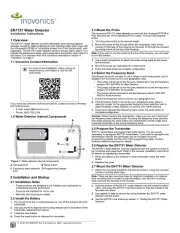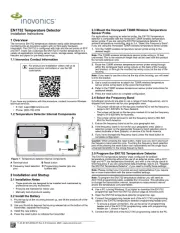Inovonics EN1751 Manual
| Mærke: | Inovonics |
| Kategori: | Detektor |
| Model: | EN1751 |
| Bredde: | 43 mm |
| Dybde: | 23 mm |
| Højde: | 89 mm |
| Vægt: | 54 g |
| Produktfarve: | Hvid |
| Produkttype: | Sensmitter |
| Driftstemperatur (T-T): | -20 - 60 °C |
| Forbindelsesteknologi: | Trådløs |
| Strømkilde type: | Batteri |
| Batteritype: | CR123A |
| Bæredygtighedscertifikater: | Federal Communications Commission (FCC), RoHS |
| Genopladeligt batteri: | Ingen |
| Driftsfrekvens: | 902-928 MHz |
Har du brug for hjælp?
Hvis du har brug for hjælp til Inovonics EN1751 stil et spørgsmål nedenfor, og andre brugere vil svare dig
Detektor Inovonics Manualer

20 August 2024

18 August 2024
Detektor Manualer
- Ferguson
- Zircon
- Kemo
- Einhell
- Nedis
- Ei Electronics
- Dometic
- Beha-Amprobe
- König
- Perel
- Gossen
- FireAngel
- Seco-Larm
- Seaward
- Escort
Nyeste Detektor Manualer

15 December 2025

11 December 2025

10 December 2025

9 December 2025

9 December 2025

9 December 2025

3 December 2025

26 November 2025

23 November 2025

22 November 2025
